Shopify POS (Point-of-sale): A comprehensive guide 2024
This comprehensive overview covers everything about Shopify Point of Sale (POS), from setup and integration to expert tips for maximizing sales and enhancing customer experiences in-store and online.
What is Shopify POS (Point-of-Sale)?
Shopify POS is a point-of-sale solution developed by Shopify that helps to sell your products in person. You can use Shopify POS to sell almost anywhere, including brick-and-mortar stores, markets, and pop-up shops.
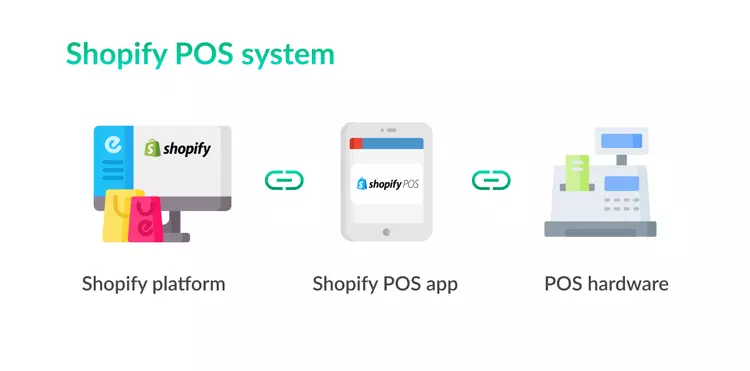
When you use the Shopify POS, you are actually using the Shopify POS system that consists of the Shopify POS app, POS hardware, and the Shopify platform.
With that said, you will need to have a Shopify subscription plan, the Shopify POS app installed to both your Shopify Store and your iOS/Android device at the point of sale, and POS hardware to be ready with your Shopify POS system.
Read more:
- Shopify Starter Plan Review
- Shopify Basic Plan Overview
- Shopify Standard Plan Review
- Shopify Advanced Plan Overview
When was Shopify POS released?
On the 12th of August 2013, Shopify released Shopify POS, making its first move to support retail businesses to synchronize inventory and create a seamless User Experience both online and offline.
Since then, Shopify has been expanding its Shopify POS system with more upgrades and more hardware integration to make it even more, easier to set up and operate.
Shopify POS Lite vs Shopify POS Pro
Overview
Shopify POS Lite and Shopify POS Pro are two versions of Shopify POS. Shopify POS Lite comes free with every Shopify plan and gives businesses of any size the ability to sell in-person from a retail store or on the go, like managing products/inventory, accepting payments, and building customer relationships.
You can enhance the functionality of POS Lite by upgrading to POS Pro. The Pro subscription adds:
- Faster workflows for exchanges, discounts, local pickup, stock transfers, and more
- More control over staff permissions with unlimited POS PINs and custom roles
- Deeper insights about product performance with in-depth inventory reporting
- A 2-year warranty on hardware
- Access to a dedicated retail support team
If your retail business sees a lot of foot traffic, has multiple levels of staff, or carries an extensive product catalogue, we recommend upgrading to the every Shopify plan to unlock these essential features for your business.
Features comparison
In detail, this is a comparison between Shopify POS lite and Shopify POS Pro:
Shopify POS lite
- Integrated payment hardware with Shopify Payments (Canada, Ireland, United Kingdom, and the United States only)
- Non-payment retail hardware integrations
- Customizable smart grid
- Add/edit customer profiles
- Customer View app
- Multi-location inventory, orders, and customer management
- Email/SMS receipts
- Discount codes and manual discounts ($, %)
- Sell and redeem gift cards
- Camera barcode scanning
- Custom sales
- Offline cash payments
- Staff PINs (based on Shopify plan)
- Refunds
- Cash tracking
- Email carts
Shopify POS pro
Shopify POS Pro has all of the Shopify POS Lite features plus the following:
- Custom printed receipts
- Automatic discounts
- Retail staff permissions and management
- Unlimited POS-only staff
- Sales attribution
- Exchanges
- Save/retrieve cart
- Ship to home
- Local pickup fulfillment
- Local delivery fulfillment
- Advanced inventory management with Stocky
- Daily sales reports
- In-app retail store analytics
Shopify POS Pricing and initial cost
Shopify POS subscription
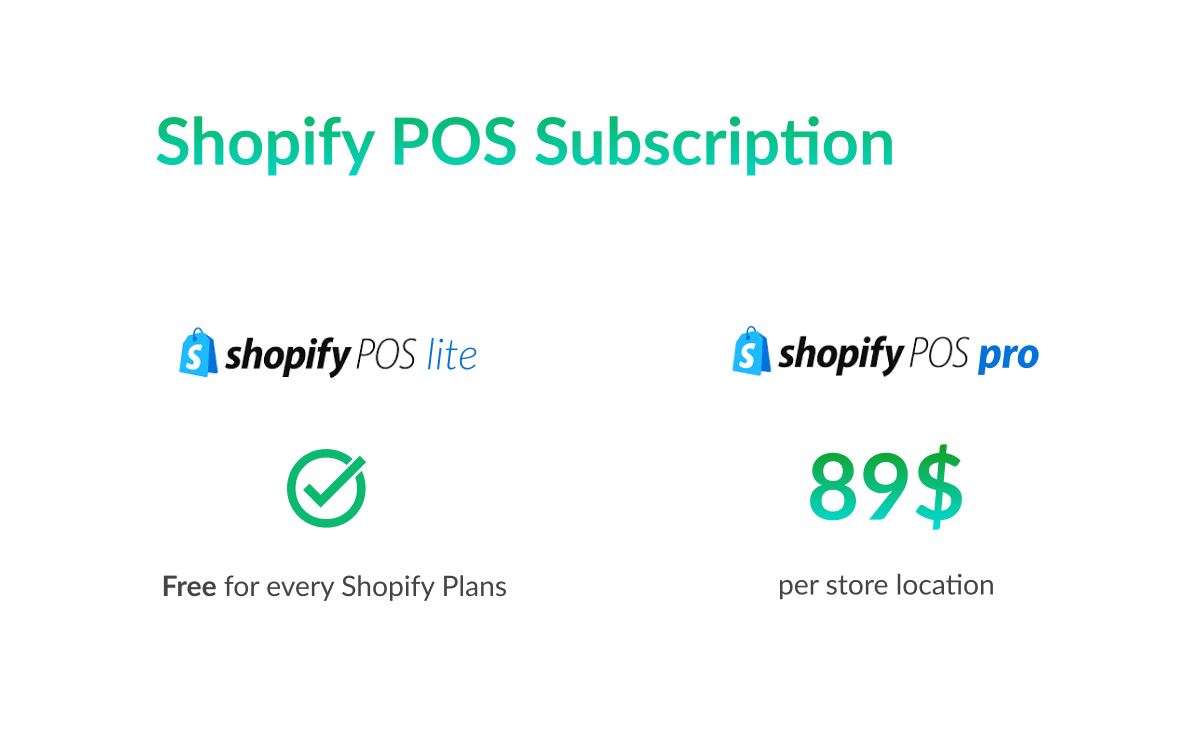
A Shopify subscription is required for both Shopify POS Lite and Shopify POS Pro.
However, while Shopify POS Lite is free for every Shopify plan(starting at 39$ a month), Shopify POS Pro will be at 89$ per store location per month.
Shopify POS app
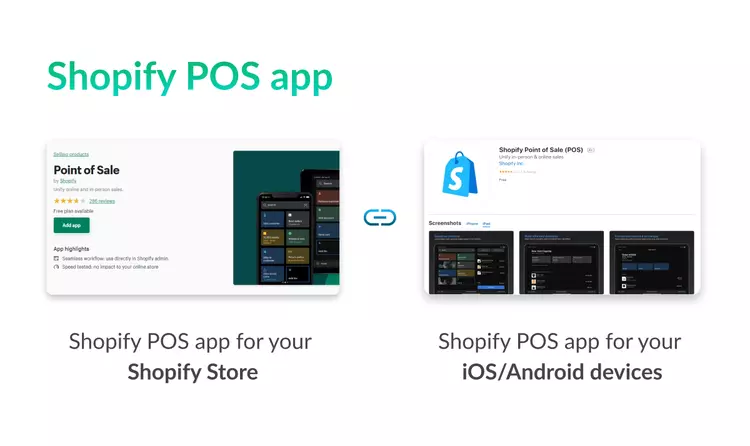
You might need both of the Shopify POS App, one for your Shopify Store and one for your iOS/Android devices, which serves as a hub for managing your customer orders, your customer contacts, and your promotions while connecting all of the POS hardware.
Shopify POS hardware
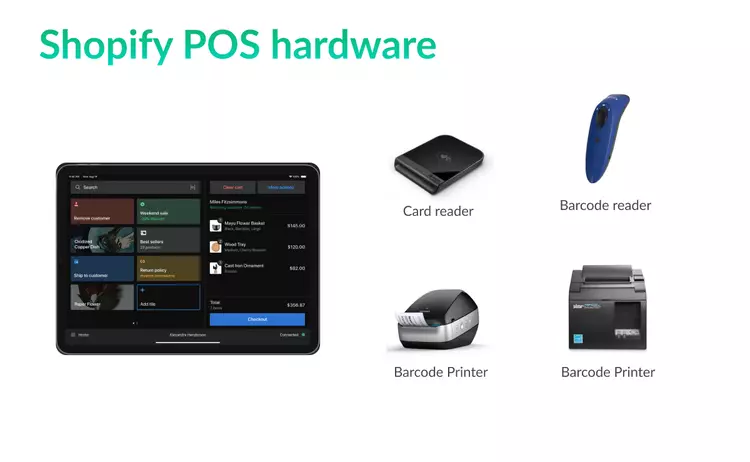
To get started with Shopify POS, all you need is a Shopify card reader to accept payments and a tablet or smartphone to run the Shopify POS app.
With the Shopify POS app, you can scan barcodes on your phone while doing inventory counts and checking out products. Smartphones are also a good option for selling at events and pop-up shops, giving you the flexibility to take payments anywhere.
From there, you can build out your POS to meet your store’s needs by connecting compatible hardware accessories like barcode scanners, printers, and cash drawers.
For example, you can purchase additional POS hardware, such as card readers, cash drawers, and receipt printers, on the Shopify website. Here are the prices of some of the standard hardware accessories:
- Barcode scanners: $229 to $329
- Label printers: $299 to $499
- Receipt printers: $299 to $369
- Cash drawers: $139 to $159
In addition, Shopify also offers all-in-one devices like POS Go or a retail POS bundle that covers almost every hardware you need.
Summary: Shopify POS cost estimation
Your Shopify POS cost depends on your Shopify Plan and Shopify POS subscription, but you might need to be ready for the following costs:
- Shopify POS Lite: from $1094 per store as 1-time investment, covering your Shopify subscription and Shopify POS system.
- Shopify POS Pro: from $2162 per store for year-1 investment. From the 2nd year, it will only cost $1068 per store for your Shopify POS system.
This estimation might not be correct for all merchants, and the initial investment might be different for your Shopify POS hardware of choice. We have picked the cheapest option for each type of hardware to give you what could be the minimum spending for Shopify POS.
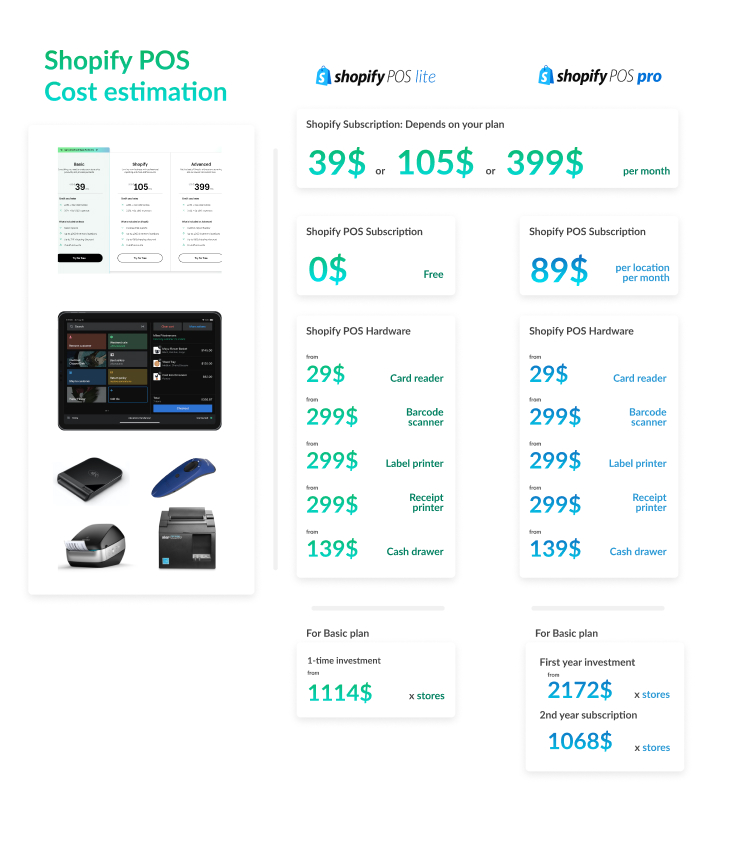
How does Shopify POS work?
Inventory management
A product’s inventory is the quantity of a particular product that is available for sale in your store.
You can use Shopify POS for:
- Avoiding selling more stock than you have
- Pinpointing when you need to order or make more of your product
- Identifying when you have too much stock
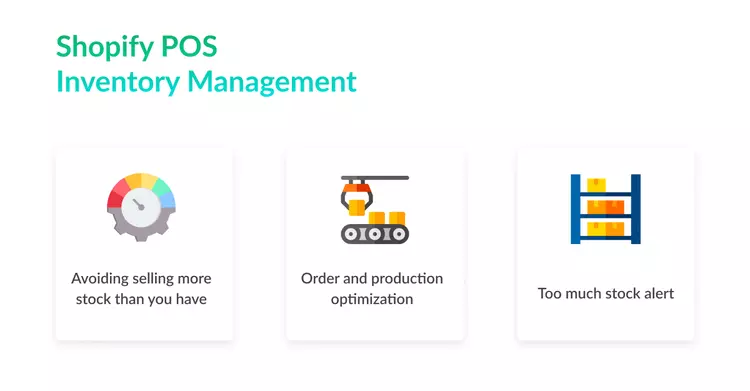
Tips:
- If possible, update your inventory quantities when your retail outlets are closed and when you’re not having big online sales events.
- If you have a small number of locations and products, then update the quantities on the Inventory page.
- If you have a large number of locations and products, then use the bulk editor, or use CSV file exports and imports.
Customer Management
Using Shopify POS, you can create profiles for your customers to save their names and contact information.
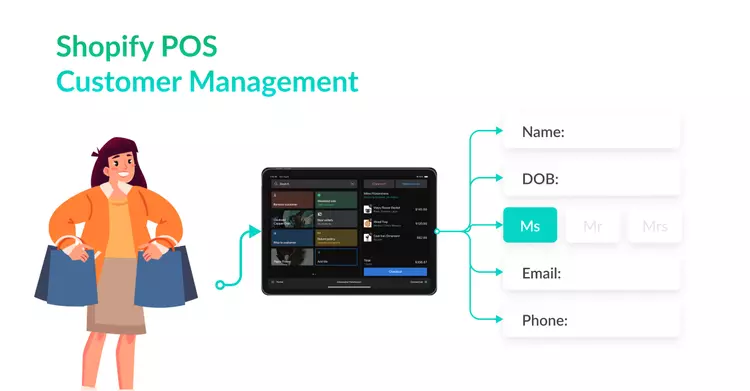
Having customer contact information is particularly helpful for sending receipts via email and for broadening your email marketing list.
Payment methods
You can accept different payment methods in Shopify POS so that your customers have a choice of payment options at checkout, including:
Card Payment
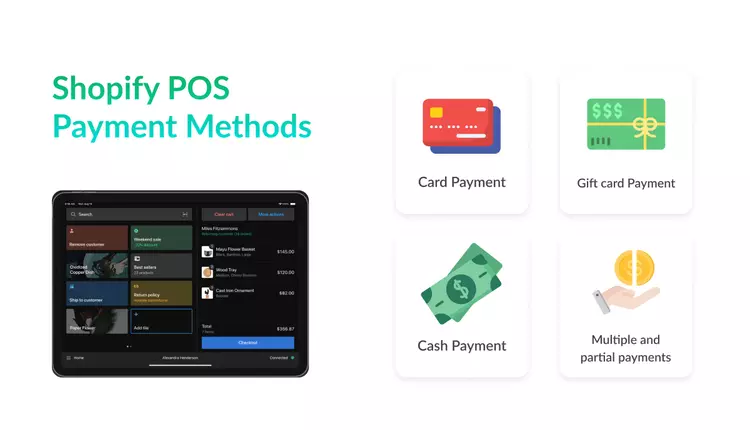
Depending on the hardware that you are using and the payment methods that you accept, a customer can pay for a purchase using a credit card, for example:
- Swipe credit payment
- Tap and chip credit payment
- External card reader (in the case you don’t use Shopify Payments)
- Manual credit payment
Cash Payment
When you accept a cash payment, Shopify calculates the change and tracks the amount of cash in the cash drawer.
Cash payments are enabled by default, but you can change your settings on the Payment types screen. There are a certain number of drawers that Shopify support, and you can find it here.
Gift card payment
Gift cards give your customers the opportunity to share their love for your brand with others.
With Shopify POS, you can sell and redeem gift cards in person. Your customers can use gift cards to make purchases from your store both in person and online.
Multiple and partial payments
If a customer can’t pay for their whole order, then the Shopify POS app lets you accept partial payments in-store. You can retrieve the order later and then collect the remaining balance from the customer using a payment method of their choice.
Managing orders, refunds, and exchanges
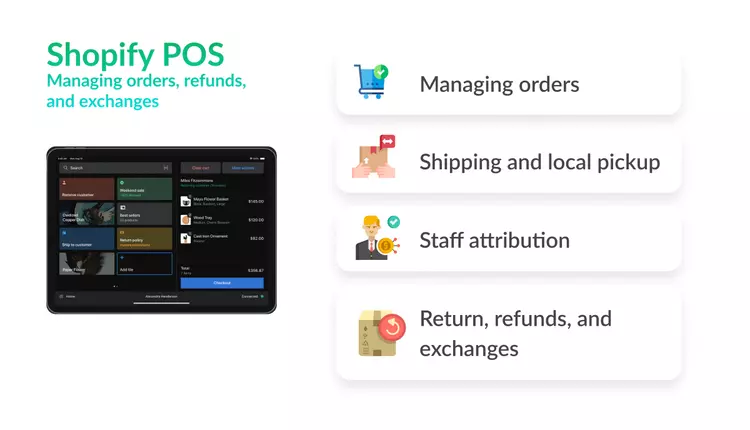
The Shopify POS Orders screen show all your store’s orders, whether they were placed online or in person. From each order, you can:
- Review its details
- Add a note
- Re-issue a receipt
- Perform a refund or exchange
- Take additional payment for an order if it was only partially paid
Receipt management
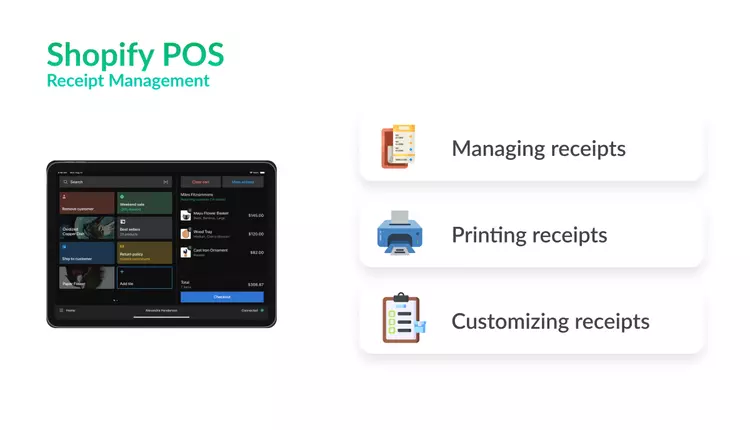
Receipts are the customer’s proof of what they bought and how much they paid. You can give your customers their receipts in a number of ways, such as printing them on your receipt printer, emailing it to them, or texting it to them.
If you have multiple receipt printers, then you can choose which one is the default printer for each of your POS devices.
You can also customize the appearance of your receipts by adding your store’s location, the customer’s information, or any order notes.
Point of Sale staff management
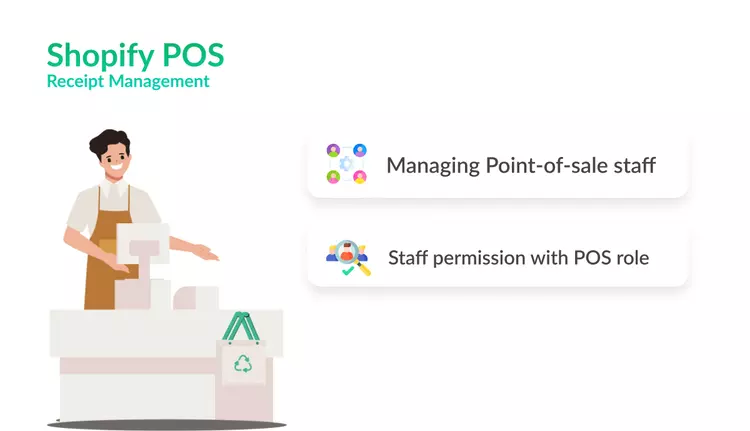
You might need to give those staff permissions so that they can use Shopify POS to run your store.
All Shopify POS staff can be given access to Shopify POS by selecting the Give Point of Sale access to this staff permission on the Users and permissions page in the Settings section of your Shopify admin.
To log in to Shopify POS using a Shopify ID or login credentials, your staff needs Shopify POS login requirements. Staff who don’t have the necessary permissions can only log in with a PIN after staff with permissions have logged in first.
You can give different staff different permission levels to your store’s Point of Sale (POS) and retail activities using POS roles, which are a set of permissions. You can create different POS roles that, when assigned to your Point of Sale staff, determine how much permission each staff has for the various activities that are required to run your store.
Discount management
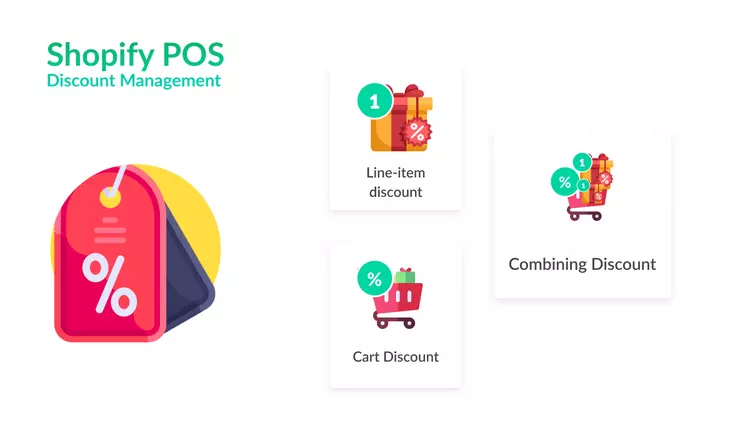
In Shopify POS, you can apply discounts when you’ve added items to the cart. You can apply a discount to the whole cart or individual line items.
If you have multiple stores with a POS Pro subscription, plus an iOS/Android device at the point of sale, then you can apply any automatic discounts you created to those locations.
To allow your staff to use POS discounts, give your staff permission to Apply custom discounts or Apply discount codes.
Cash register management
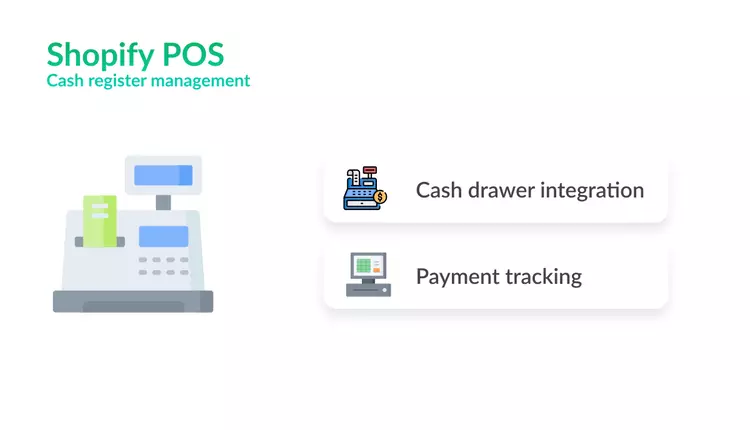
A cash drawer helps you to keep track of your Shopify store’s cash securely and reliably. Managing your cash register helps you keep track of your cash transactions and to hold staff accountable for the money they’ve handled.
Who should use Shopify POS?
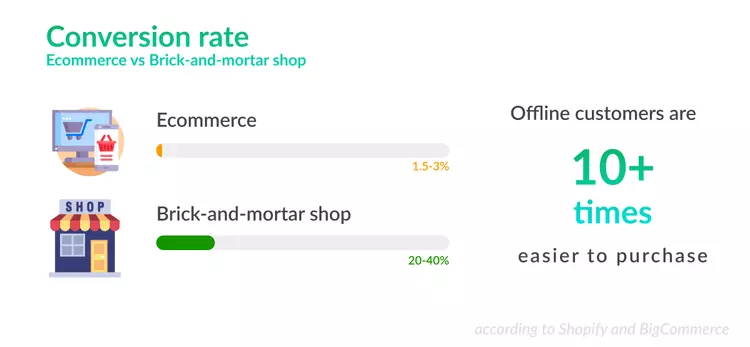
Preferably, you should use the Shopify POS system when you already have an online store and are expanding your business to offline customers.
But you can always start selling with Shopify POS, whether you want to open a retail store, pop-up shop, sell at events, or out of the trunk of your car.
Here are product ideas for you to start with Shopify POS:
- Home decor and furniture
- Gaming products
- Phone Accessories
- Fashion Products
- Electronic Products
- Hobby Products
- Kitchen accessories
- Pet Products
- And many more
Final Thoughts
And there you have it — everything you need to know about Shopify POS. We hope our in-depth guide has provided you with valuable insights and practical advice to make the most of the Shopify POS system.
FAQs:
What’s the difference between Shopify POS Lite and Pro?
Shopify POS Lite is basic and free with every Shopify plan, ideal for simple in-person sales. POS Pro offers advanced features like deeper inventory insights and enhanced staff management, suitable for larger retail operations.
What hardware is required for Shopify POS, and what does it cost?
Essential Shopify POS hardware includes a card reader and a smartphone or tablet. Costs start from $1094 for POS Lite, with POS Pro costing more due to additional features.
How does Shopify POS handle inventory and payments?
Shopify POS manages inventory across locations, supports multiple payment methods including cards and cash, and allows for partial payments and easy refunds/exchanges.
Who should use Shopify POS?
Shopify POS is designed for businesses looking to sell in person, such as retail stores, pop-up shops, and event sales, supporting a wide range of product types.
What is the best POS system for Shopify?
The best POS system for Shopify is Shopify POS itself. It is specifically designed to integrate seamlessly with Shopify’s e-commerce platform, offering features like inventory management, payment processing, and customer relationship management.
What countries can use Shopify POS?
Shopify POS is available worldwide, but Shopify Payments and hardware purchase vary by country. These include the United States, Canada, the United Kingdom, Ireland, Australia, New Zealand, and several others





